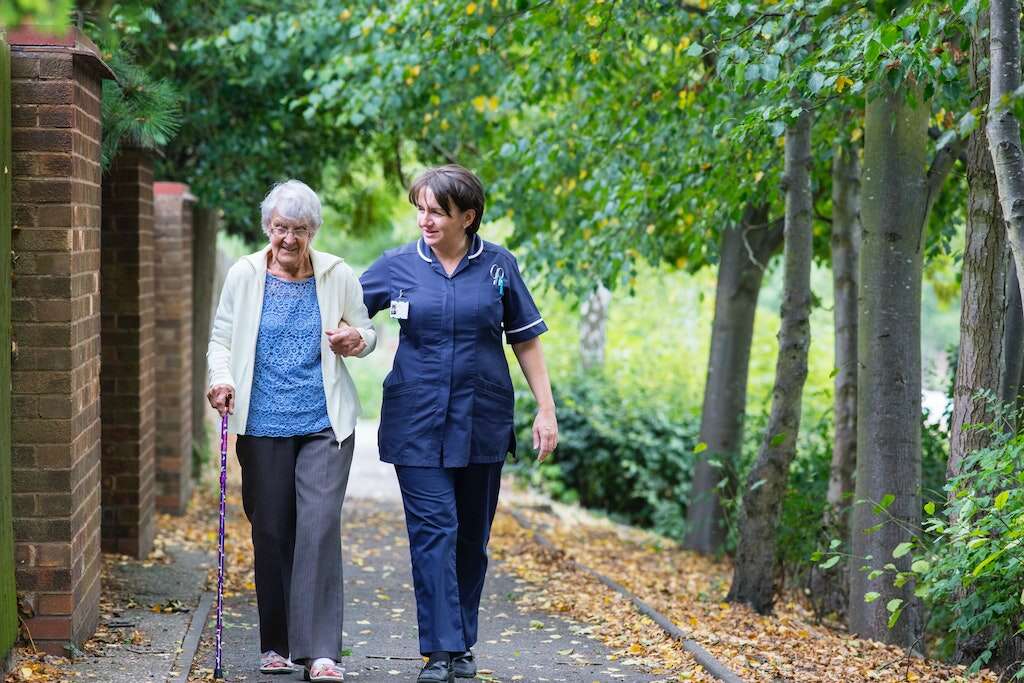10 Causes of Muscle Spasms
 Article Sources
Article Sources
- 1. 'Muscle Cramp.' Mayo Clinic, Mayo Foundation for Medical Education and Research, 3 Mar. 2021, www.mayoclinic.org/diseases-conditions/muscle-cramp/symptoms-causes/syc-20350820.
- 2. Cleary, Michelle A, et al. 'Dehydration and Symptoms of Delayed-Onset Muscle Soreness in Normothermic Men.' Journal of Athletic Training, National Athletic Trainers Association, 2006
- 3. Bengtsson, A. 'Muscle in Fibromyalgia.' OUP Academic, Oxford University Press, 1 July 2002, academic.oup.com/rheumatology/article/41/7/721/1788210.
- 4. Tardy, Anne-Laure, et al. 'Vitamins and Minerals for Energy, Fatigue and Cognition: A Narrative Review of the Biochemical and Clinical Evidence.' Nutrients, MDPI, 16 Jan. 2020, www.ncbi.nlm.nih.gov/pmc/articles/PMC7019700/.
- 5. 'Muscle Weakness: 12 Causes and More.' Medical News Today, MediLexicon International, www.medicalnewstoday.com/articles/325876.
- 6. Publishing, Harvard Health. 'Take That, Muscle Cramps!' Harvard Health, www.health.harvard.edu/staying-healthy/take-that-muscle-cramps.
- 7. 'Aging Changes in the Bones - Muscles - Joints: MedlinePlus Medical Encyclopedia.' MedlinePlus, U.S. National Library of Medicine, medlineplus.gov/ency/article/004015.htm.
- 8. 'Stress Effects.' The American Institute of Stress, 16 June 2020, www.stress.org/stress-effects#body.
- 9. Addiss, Faith. 'Electrolytes - What Are They? What Happens If You Don't Have Enough?' Roswell Park Comprehensive Cancer Center, www.roswellpark.org/cancertalk/201808/electrolytes-what-are-they-what-happens-if-you-dont-have-enough.
- 10. 'Pinched Nerve in the Back: How to Tell, Causes, and Treatments.' Medical News Today, MediLexicon International, www.medicalnewstoday.com/articles/pinched-nerve-in-the-back#symptoms.
- 11. Publishing, Harvard Health. 'Is My Medication Causing These Side Effects, or Is It Just Aging?' Harvard Health, www.health.harvard.edu/aging/is-my-medication-causing-these-side-effects-or-is-it-just-aging.
- 12. 'Hypothyroidism (Underactive Thyroid).' UCLA Endocrine Center, www.uclahealth.org/endocrine-center/hypothyroidism.
- 13. 'Dystonia.' Mayo Clinic, Mayo Foundation for Medical Education and Research, 25 Apr. 2020, www.mayoclinic.org/diseases-conditions/dystonia/symptoms-causes/syc-20350480.
Muscle spasms are a common complaint. Many people experience these painful cramps in their lifetime. The condition involves tight, contracting muscles that can’t seem to relax. Muscle spasms, which can affect any muscle or muscle group, have many causes. Determining the reason for the cramps is essential to treating and preventing them from reoccurring.1‘Muscle Cramp.’ Mayo Clinic, Mayo Foundation for Medical Education and Research, 3 Mar. 2021, www.mayoclinic.org/diseases-conditions/muscle-cramp/symptoms-causes/syc-20350820.
People naturally experience muscle spasms as they age and muscle mass decreases. Along with people 50 and older, cramps are common in infants. Other potential causes vary from dehydration and overuse to electrolyte imbalances and failing to stretch enough before exercising.

1. Dehydration
Dehydration occurs when a person loses more fluids than they take in throughout the day. Causes of dehydration include vomiting, diarrhea, excessive urination from medications, fever, and not drinking enough when it’s hot or during workouts. People with certain medical conditions, such as diabetes and kidney disease, are more prone to dehydration and should consume extra fluids as a preventative measure.2Cleary, Michelle A, et al. ‘Dehydration and Symptoms of Delayed-Onset Muscle Soreness in Normothermic Men.’ Journal of Athletic Training, National Athletic Trainers Association, 2006
Muscles need fluids to contract and relax. Without water, they can get tense, tighten and lead to painful cramping. Dehydration also increases the risk of muscle injury during workouts and everyday activity.

2. Muscle Fatigue
Muscle fatigue is a common cause of muscle spasms. It often occurs after pushing too hard during exercise or in any situation where the muscle is worked too hard. Muscle fatigue is also a symptom of medical conditions such as magnesium deficiency, fibromyalgia and sleep deprivation.3Bengtsson, A. ‘Muscle in Fibromyalgia.’ OUP Academic, Oxford University Press, 1 July 2002, academic.oup.com/rheumatology/article/41/7/721/1788210.,4Tardy, Anne-Laure, et al. ‘Vitamins and Minerals for Energy, Fatigue and Cognition: A Narrative Review of the Biochemical and Clinical Evidence.’ Nutrients, MDPI, 16 Jan. 2020, www.ncbi.nlm.nih.gov/pmc/articles/PMC7019700/.,5‘Muscle Weakness: 12 Causes and More.’ Medical News Today, MediLexicon International, www.medicalnewstoday.com/articles/325876.
Resting the area can reduce fatigue. To prevent fatigue while exercising, only work one muscle group every other day. For example, if Monday is leg day, Tuesday’s workout should be different, such as a core workout.

3. Not Enough Pre-Workout Stretching
Muscle cramps and spasms can occur from not warming up before running, lifting weights and other physical activities. Warmed up muscles have a fluid motion. Without proper warm up, painful spasms can develop.6Publishing, Harvard Health. ‘Take That, Muscle Cramps!’ Harvard Health, www.health.harvard.edu/staying-healthy/take-that-muscle-cramps.
It’s vital to take a few minutes to stretch all major muscle groups before getting active. Stretches are also helpful in relieving cramps. The same stretching exercises for the arms, legs, and core muscles used before a workout can reduce spasms in the same areas.

4. A Decrease in Muscle Mass From Aging
As people age, they lose muscle mass. These changes can begin as early as the 20s for men and 40s for women. Genetics plays a large role in when and how much mass a person loses. Exercise is one of the best ways to slow or prevent age related muscle or joint problems.7‘Aging Changes in the Bones - Muscles - Joints: MedlinePlus Medical Encyclopedia.’ MedlinePlus, U.S. National Library of Medicine, medlineplus.gov/ency/article/004015.htm.
With less muscle mass, it becomes easier to overwork muscles, leading to more frequent spasms. Besides the natural aging process, older people may move less, causing muscles to weaken and cramp.

5. Excess Stress
Everyone experiences stress, but too much stress can cause health problems. Keeping the body tense during stressful situations puts excess pressure on muscles. This tension also increases the chances of injury during everyday activities or while working out at the gym.8‘Stress Effects.’ The American Institute of Stress, 16 June 2020, www.stress.org/stress-effects#body.
Unresolved stress over long periods can lead to less exercise, decreased sleep and an increase in muscle spasms. Reducing stress is the only long-term solution to stop cramping muscles.

6. Electrolyte Imbalance
Electrolyte imbalance is a potential muscle spasm cause. Minerals provide the energy that muscles need to complete tasks. Electrolytes enable muscles to contract, and they transmit signals from the muscles to the nervous system.
The most common deficiencies that affect muscles include magnesium, potassium, calcium, and phosphate. These electrolytes can come from dietary foods in the form of bananas, beans, nuts and seeds, green vegetables and milk products. Supplements can also regulate an electrolyte imbalance.9Addiss, Faith. ‘Electrolytes - What Are They? What Happens If You Don’t Have Enough?’ Roswell Park Comprehensive Cancer Center, www.roswellpark.org/cancertalk/201808/electrolytes-what-are-they-what-happens-if-you-dont-have-enough.

7. Pinched Spinal Nerve
A pinched nerve is painful and can also cause equally painful muscle cramps. This condition occurs when bone or tissue surrounding the spine causes compression. Pinched nerves affect the signals between the brain and nerves.
Compression can occur in the cervical or lumbar spine. Muscle spasms are more common in the lumbar region. Along with muscle spasms, a pinched lumbar spinal nerve has other symptoms, including tingling sensations, muscle weakness and numbness.10‘Pinched Nerve in the Back: How to Tell, Causes, and Treatments.’ Medical News Today, MediLexicon International, www.medicalnewstoday.com/articles/pinched-nerve-in-the-back#symptoms.

8. Medications
Some medications can cause muscle spasms. The most typical prescriptions that cause cramps are statins that control cholesterol levels. The most common are atorvastatin (Lipitor), lovastatin (Mevacor), and simvastatin (Zocor). Research shows 10 to 20 percent of patients taking these drugs experience muscle cramping.11Publishing, Harvard Health. ‘Is My Medication Causing These Side Effects, or Is It Just Aging?’ Harvard Health, www.health.harvard.edu/aging/is-my-medication-causing-these-side-effects-or-is-it-just-aging.
Several medications are available to try for these conditions. A physician may be able to change the brand or dose of the statin to reduce or eliminate muscle spasms. Supplementing with CoQ10 also helps.

9. Hypothyroidism
Hypothyroidism is a medical condition that occurs when the thyroid isn’t producing enough thyroxine (T4) and triiodothyronine (T3). The deficiency causes several symptoms that can vary widely between patients. Along with muscle cramps, hypothyroidism can cause joint pain and fatigue that may contribute to spasms.
Physicians can treat the ailment with medications and stop painful muscle cramps. The most common cause of hypothyroidism is Hashimoto’s thyroiditis, an autoimmune disorder that leads to the body attacking itself.12‘Hypothyroidism (Underactive Thyroid).’ UCLA Endocrine Center, www.uclahealth.org/endocrine-center/hypothyroidism.

10. Dystonia
Dystonia is a movement disorder that leads to involuntary muscle contractions. There are three types of dystonia: focal dystonia, which affects one area of the body; segmental dystonia, which affects two or more adjacent parts; and general dystonia, which affects the whole body.
Common areas where people experience dystonia include the neck, eyelids, jaw, voicebox, hand, and forearm. Dystonia is a progressive condition that can get worse with anxiety, stress and fatigue.13‘Dystonia.’ Mayo Clinic, Mayo Foundation for Medical Education and Research, 25 Apr. 2020, www.mayoclinic.org/diseases-conditions/dystonia/symptoms-causes/syc-20350480.











